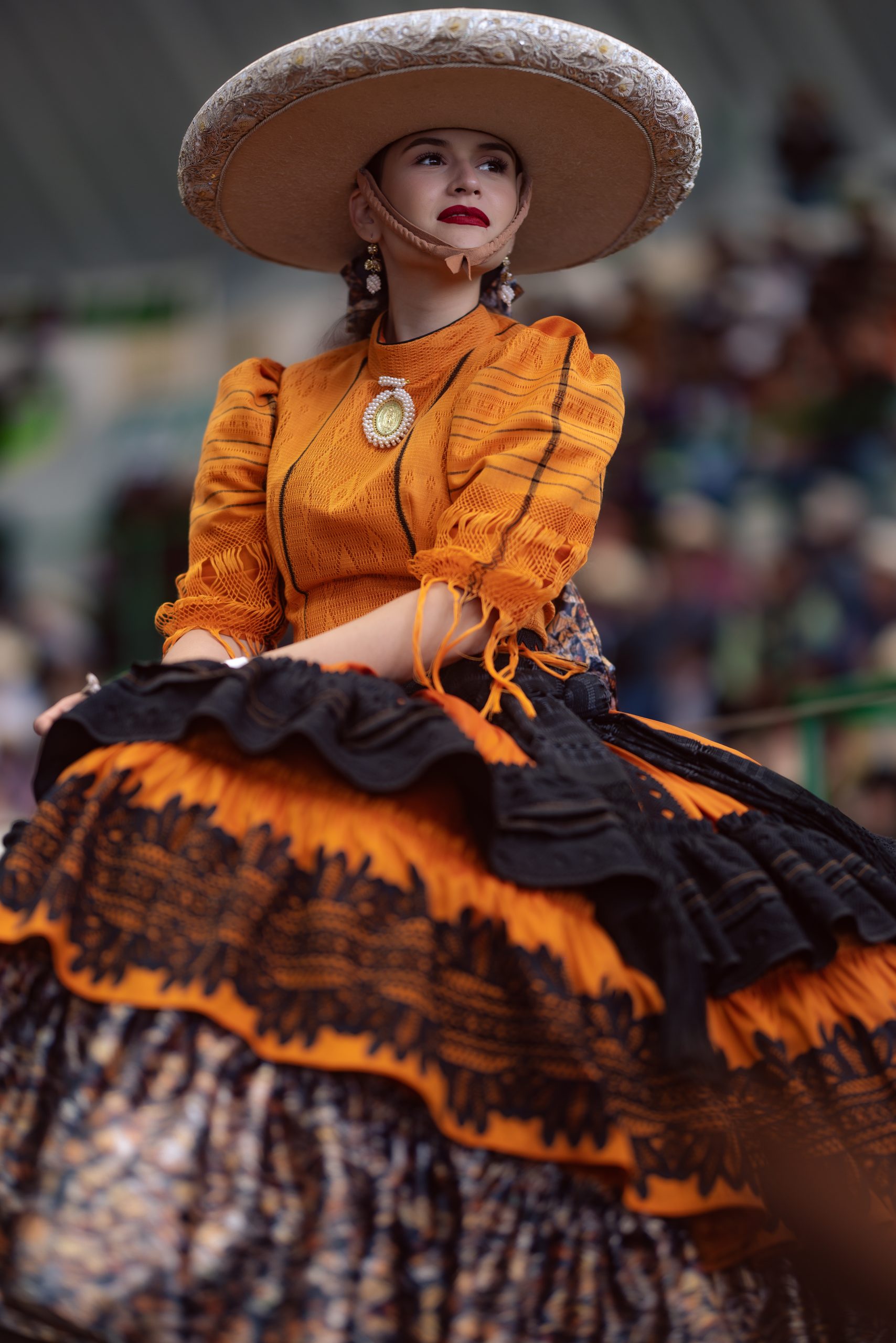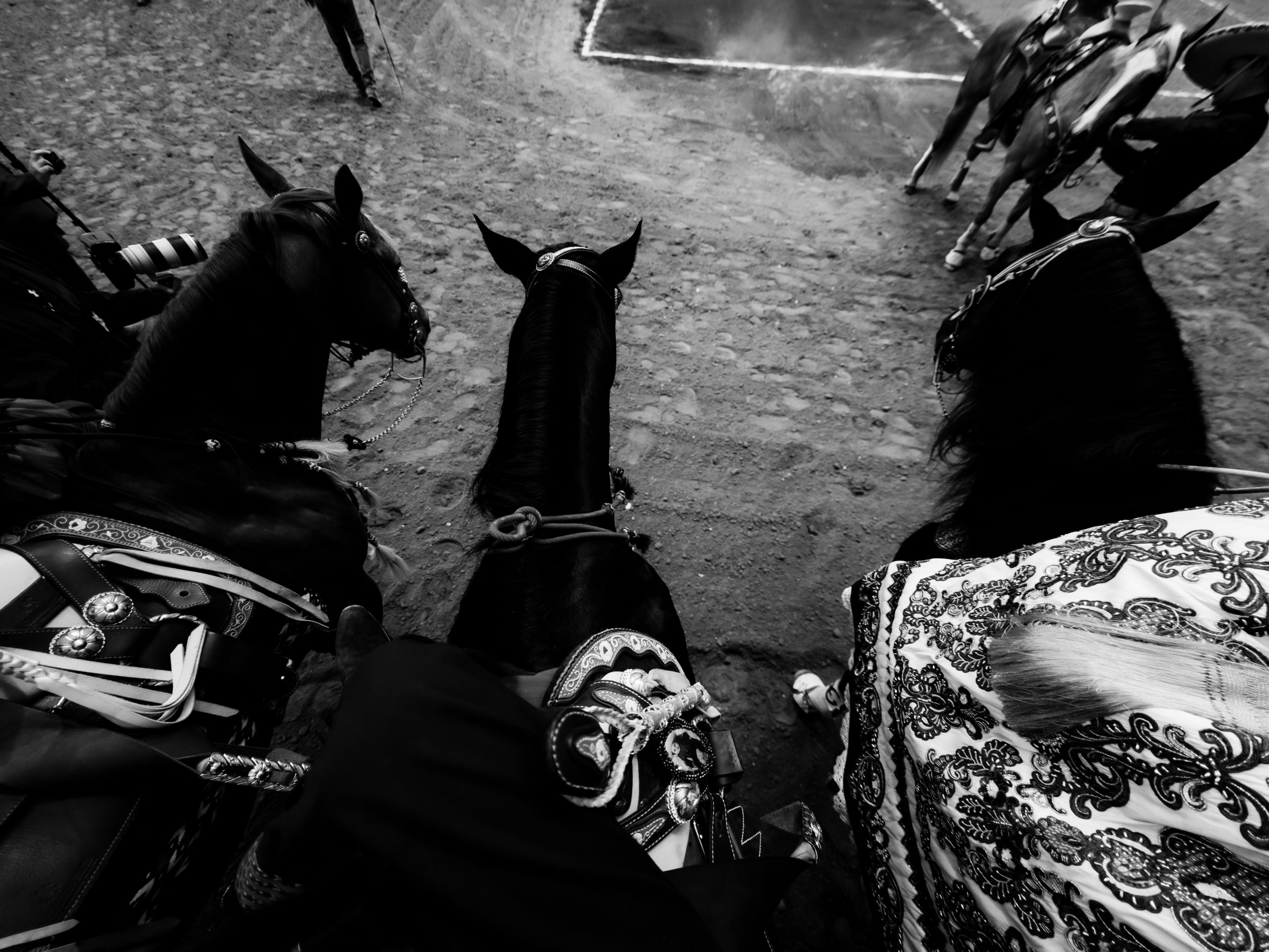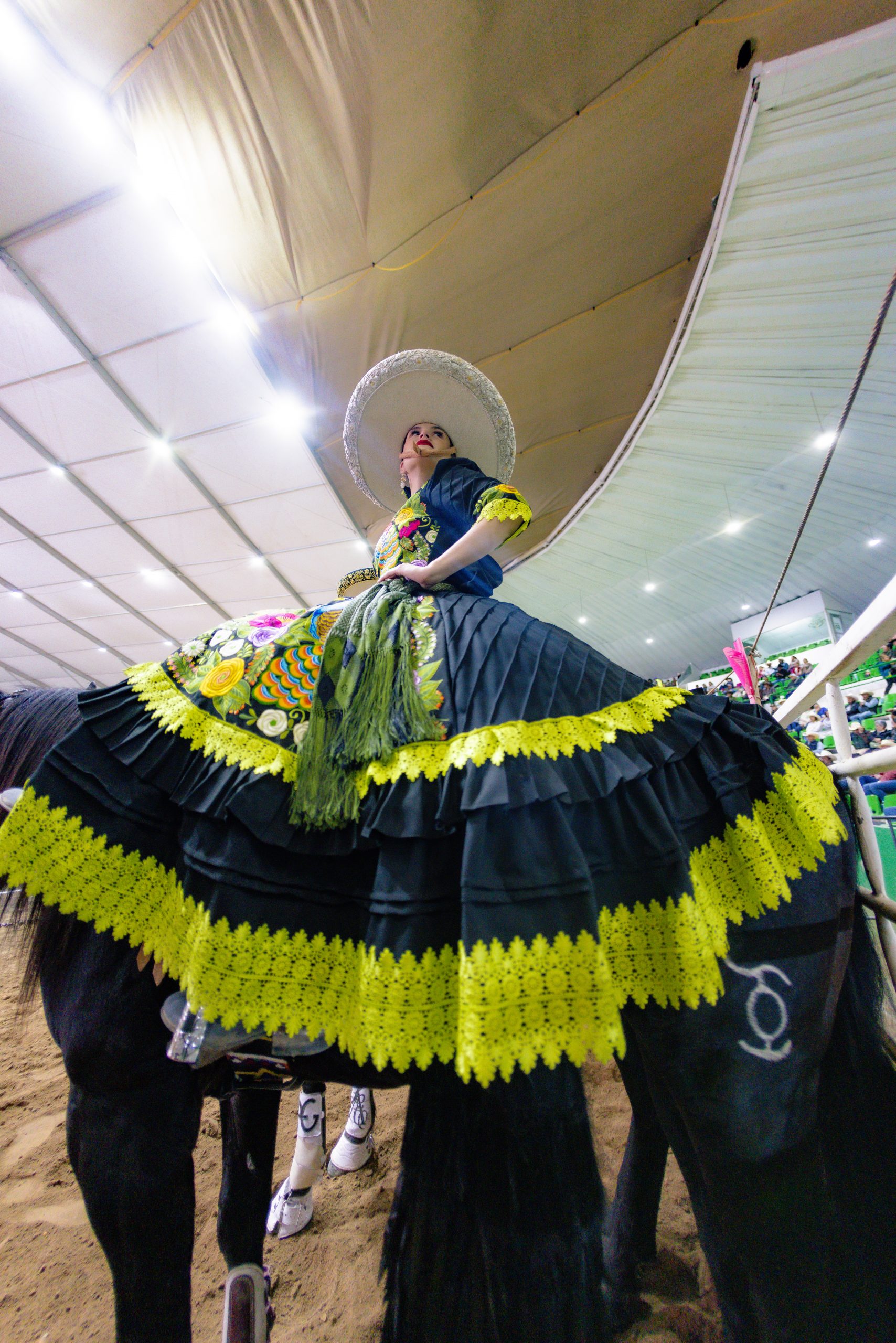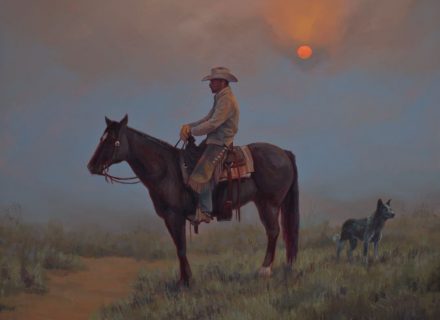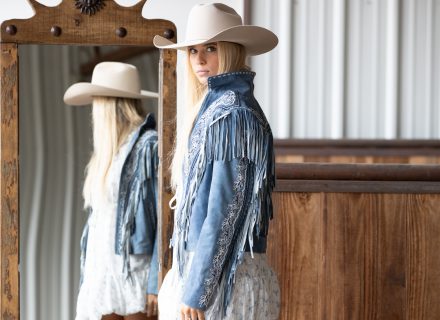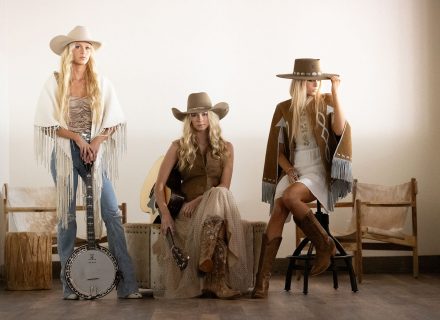Paola Pimienta is an official ambassador for the traditional rodeo event of escaramuza, popularizing vibrant traditional attire and unparalleled horseback skills in the United States.
“What I’ve noticed within the American community and the cowgirl community is ... an idea that there’s only one kind of cowgirl, but charras are cowgirls as much as cowgirls are cowgirls. We’re basically sisters.”
Paola Pimienta, 24, is the U.S. National Queen and Ambassador for charrería, the form of rodeo that originated within the historic haciendas of Mexico. Based on horsemanship skills and livestock handling techniques brought over from Spain in the 16th century, the sport today comprises 10 events with only one featuring female riders, escaramuza.
A first-generation American citizen (her parents immigrated to Washington in the 1980s), Pimienta represents 3,500 charros (Mexican cowboys) and 800 escaramuzas across the United States. She has the characteristics you’d expect of someone with the title of Queen — meticulous style, poise, and eloquence — but is also bold and ambitious. These qualities can also be generally used to describe any rider in the escaramuza event. It is defined by eight charras adorned in elaborate dresses, performing 12 high-speed synchronized maneuvers choreographed to mariachi music.
Or, as Pimienta succinctly describes it, “Escaramuza is like [a] riding drill team, side-saddle, on steroids.” It’s all about perfection. Teams are scored on skill, execution, elegance, and attire. Judges (often flown in from Mexico) go over every single stitch from head to toe, making sure each minute detail adheres to strict tradition. Charras must make complex routines appear effortless and strive for a seamless performance.
A natural ambassador, Pimienta has the ability to make the sport accessible and understandable. “There is no rulebook or guideline about this job besides to represent, educate, and grow charrería.” It is a task at which she’s thrived, creating educational presentations for local schools, building a robust social media presence, and recently collaborating with Western companies and industries including Professional Bull Riders and Tractor Supply Co.
With its visual appeal and masterful horsemanship on display, escaramuza’s popularity has grown substantially in North America. It’s a celebration of culture and a rebellion against homogenization. Even the history of escaramuza is daring and gusty.
Pimienta, a fourth-generation charra, can recite her family’s oral traditions with ease. “Originally, women were not a part of the origin of charrería. Historically, women in the haciendas weren’t allowed to ride or be involved in cattle work. They were the homekeepers. They had no place in that realm until the Mexican Revolution [began in 1910] when women were soldaderas.”
History is entrenched in the language associated with escaramuza. “Escaramuza” the word is directly translated to “skirmish.” “According to our oral traditions, women rode during the Mexican Revolution,” Pimienta says. “They would ride to an area and kick up dirt on horseback to create a diversion to lure the enemy. Then they would leave, and the men would ambush from the other side.”
Attention To Detail
The riding attire of the charra, called the Adelita, received its moniker from the Soladeras, the women who acted as military support during the revolution. To foster cultural traditions, the escaramuzas have strict clothing guidelines. “All of our competition attire adheres to the rulebook,” Pimienta says. “We can’t have flashy neon colors or any translucent fabrics like chiffon. Everything has to be natural fabrics like cotton or muslin. The dress can be hand embroidered, but it can’t be 3D; it must be flat.
“Every piece you see on us is required — from our hat to our dress to the bow on our waist. We all wear the same boots that are the same color. We all match, even down to our pantaloons.”
Whereas from the outside this might seem like rigidity, its purpose is preservation. With great effort (and cost), tack, clothing, hats, and often horses are sourced from Mexico, providing an influx of work to artisans such as silversmiths, saddlers, dressmakers, hatmakers, bootmakers, jewelers, and horse trainers.
Trusty Companion
The escaramuza horse is primarily quarter horse stock with an emphasis on athleticism and a quiet disposition. Pimienta has been riding her buckskin gelding, “Barbie,” for more than a decade. Originally bred as a cutting horse at the Wichita Ranch in Texas, Pimienta’s father purchased him from a friend in Mexico. “Barbie has taught me everything I know. He’s such an intelligent horse. If I miscalculate ... and there’s a possibility of a collision with another horse, he’ll readjust. He’s prevented many possible accidents.”
In addition to the precise reining and responsiveness required of escaramuza horses, the mounts also have to have the flexibility to be ridden both side-saddle and astride. At competitions, the horses must master smooth lead changes, precise timing, and, for some, sliding stops. Charrería is a celebration not only of charros but also of the horses themselves. Escaramuza is a living, breathing tradition.
For Pimienta, it was the bridge to her heritage and culture. As a first-generation American citizen, her connection to her forefathers’ country was quickly dissolving. “Before charrería, I was pretty close to not speaking Spanish anymore. In school, I was embarrassed about the bean sandwiches my mom had packed or shy to talk about my trips to Mexico. But then I was introduced to the escaramuzas.”
Like Pimienta, there is a resurgence of young women and men connecting to their ancestral homes and cultures. But the history of charrería isn’t just the history of Mexico; it is the genesis of North American cowboy culture. Designated as a UNESCO Intangible Cultural Heritage sport in 2016, escaramuza looks to have a bright future in the States, especially with women like Paola Pimienta riding.
“When I first met the escaramuzas, they were fearless,” she says. “Fearless in how they rode, fearless in what they wore, and fearless in how they held themselves. It has lit a fire in me. It has made me who I am.”
Keep up with Paola Pimienta on Instagram: @paola.pim
This article appears in our April 2024 issue.
PHOTOGRAPHY: Courtesy Angel Reynoso







